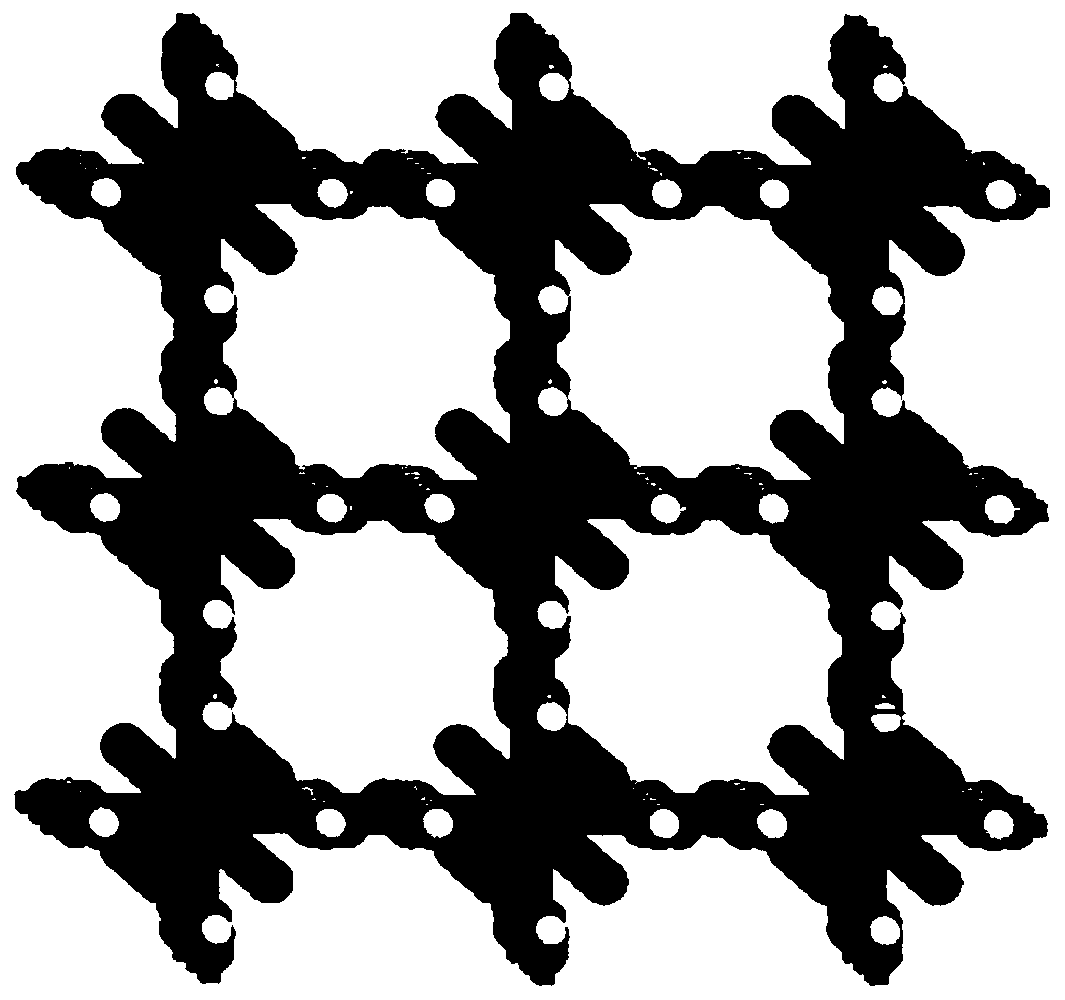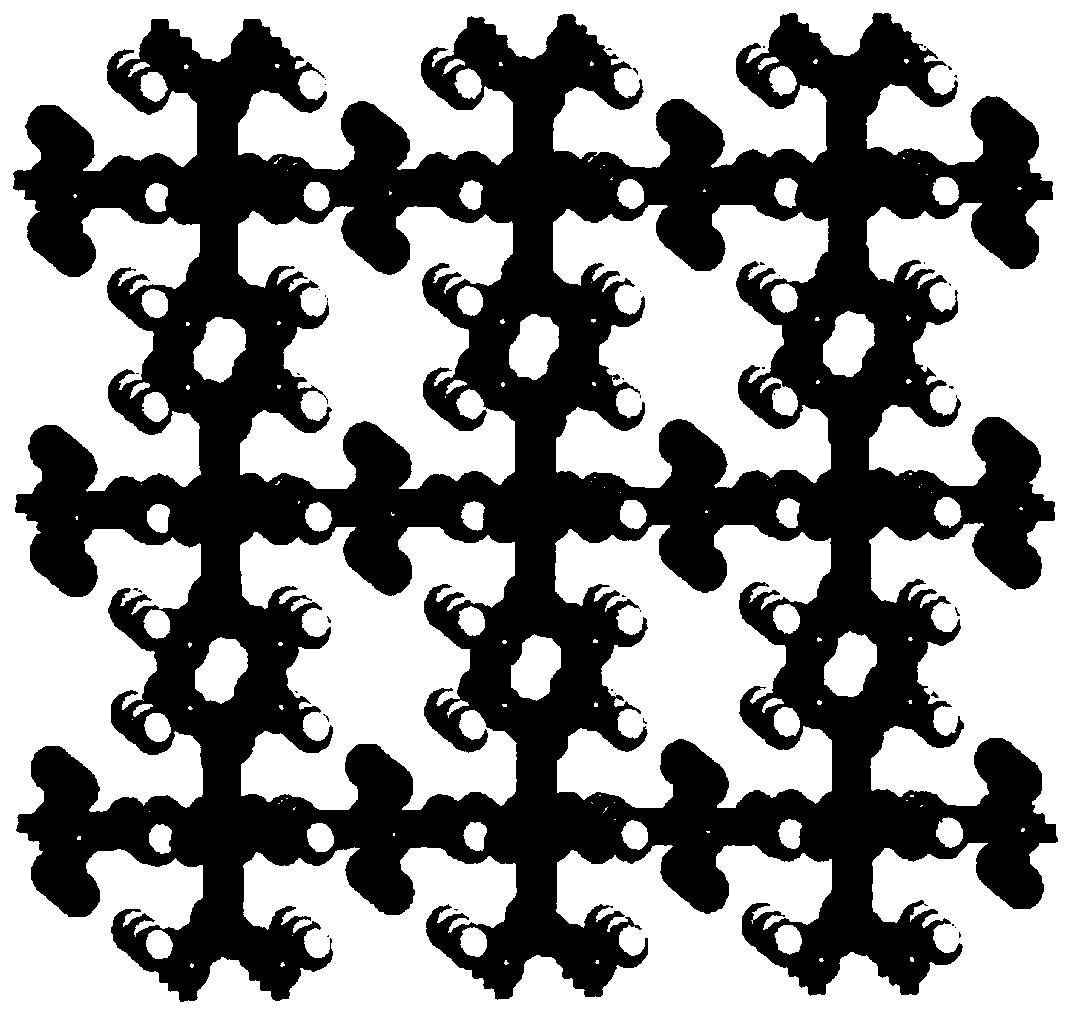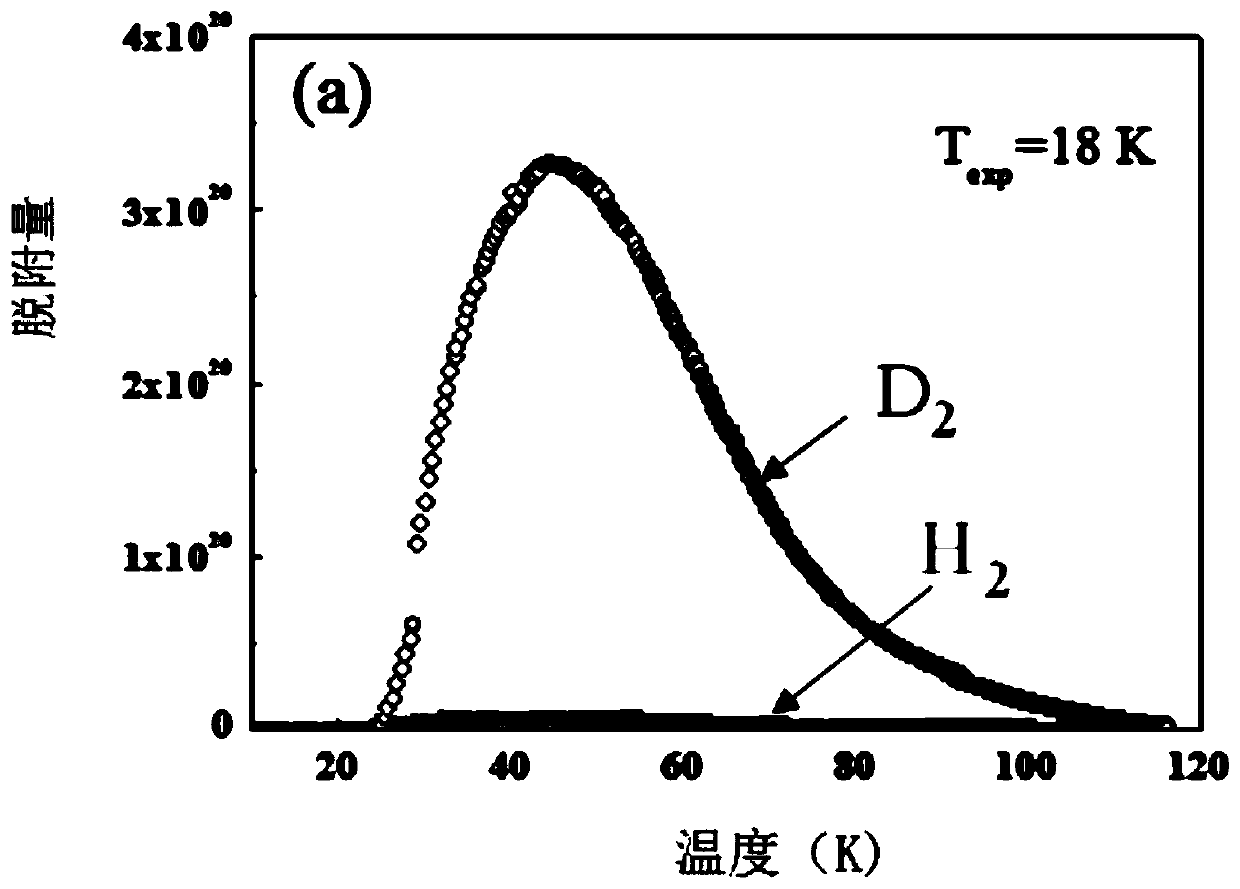Application of Ultramicroporous Metal-Organic Frameworks in Hydrogen Isotope Separation
A technology of isotope separation and organic framework, applied in the field of nuclear energy utilization, can solve the problems of low separation efficiency, low separation efficiency, and inability to be applied on a large scale, and achieve the effects of low price, simple preparation method, and cheap synthetic raw materials
- Summary
- Abstract
- Description
- Claims
- Application Information
AI Technical Summary
Problems solved by technology
Method used
Image
Examples
Embodiment 1
[0039] see Figure 1a , Figure 1b , H in SIFSIX-3-Zn 2 ,D 2 and T 2 Testing of Adsorption Isotherms of Pure Components.
[0040]Take 30-2000 mg SIFSIX-3-Zn, put it into a sample tube that has been accurately weighed, and carry out vacuum degassing on the adsorption instrument. The degassing temperature is between 30-300 ° C, and the degassing time is 1-12 hours In between, after the degassing is completed, the sample tube with the sample is accurately weighed again to obtain the sample mass, and the sample tube is transferred to the workstation for testing. The test temperature is between 18 K and 77 K, and the purity of the gas obtained by the test is greater than 99.99%.
Embodiment 2
[0042] see Figure 2a , 2b , 2c, 2d, 2e, 2f, H in SIFSIX-3-Zn 2 ,D 2 and T 2 Batch Adsorption Separation Performance Test of Mixtures,.
[0043] Take 3-5 mg SIFSIX-3-Zn sample, put it in the sample cell, and perform vacuum degassing activation between 30-300 °C. After fully activated, cool the sample cell to the test temperature, and after the system is balanced, inject a specific proportion of H into the sample cell one or more times. 2 / D 2 / T 2 Mixture, so that it reaches a certain pressure point between 1kPa and 100kPa. After the system is adsorbed and balanced, open the valve to quickly extract the gas mixture that has not been adsorbed, and then close the valve. Cool the system to a certain temperature between 18 K-30 K. After equilibrating, connect the sample cell to the mass spectrometer, and gradually raise the temperature. At the same time, use mass spectrometry to analyze the change of hydrogen isotope content over time. The adsorption selectivity can be ca...
Embodiment 3
[0045] see image 3 , H in SIFSIX-3-Zn 2 、D 2 and T 2 Fixed bed adsorption separation performance test of the mixture.
[0046] Take 100-2000mg of SIFSIX-3-Zn powder and put it into a packed bed column of a certain specification to ensure that the sample is packed compactly. At the same time, the samples in the packed bed were activated by vacuum degassing between 30–300 °C and purged with He for a certain period of time. After fully activated, cool the sample cell to the test temperature, and after the system is balanced, pass a certain proportion of H from one end of the fixed bed to the bed at a certain flow rate. 2 / D 2 / T 2 At the same time, mass spectrometry is used to monitor the concentration change of the effluent gas at the other end until the effluent gas concentration remains stable and consistent with the inlet gas concentration. Due to the high selectivity of the material to isotopes of hydrogen at 20 K, the material can effectively separate D 2 / H 2 / T ...
PUM
 Login to View More
Login to View More Abstract
Description
Claims
Application Information
 Login to View More
Login to View More - R&D
- Intellectual Property
- Life Sciences
- Materials
- Tech Scout
- Unparalleled Data Quality
- Higher Quality Content
- 60% Fewer Hallucinations
Browse by: Latest US Patents, China's latest patents, Technical Efficacy Thesaurus, Application Domain, Technology Topic, Popular Technical Reports.
© 2025 PatSnap. All rights reserved.Legal|Privacy policy|Modern Slavery Act Transparency Statement|Sitemap|About US| Contact US: help@patsnap.com



